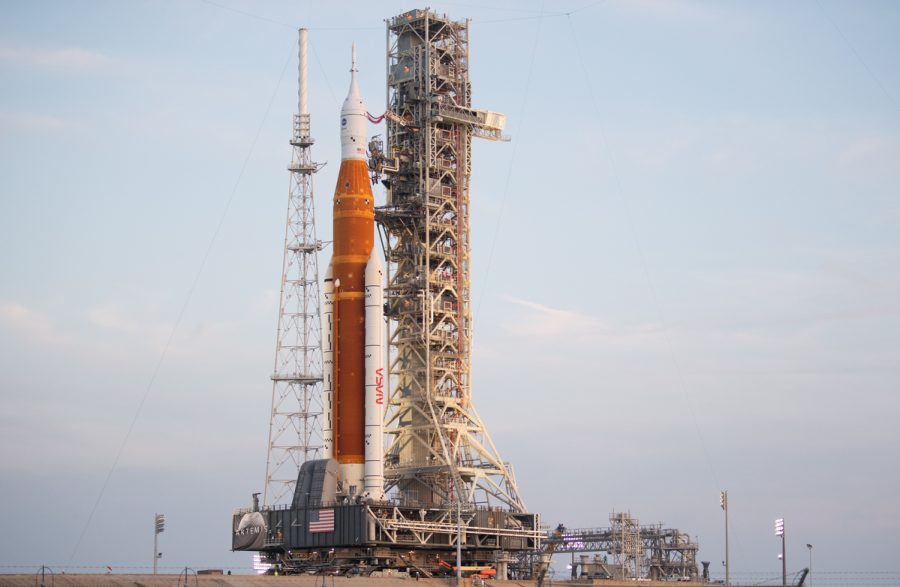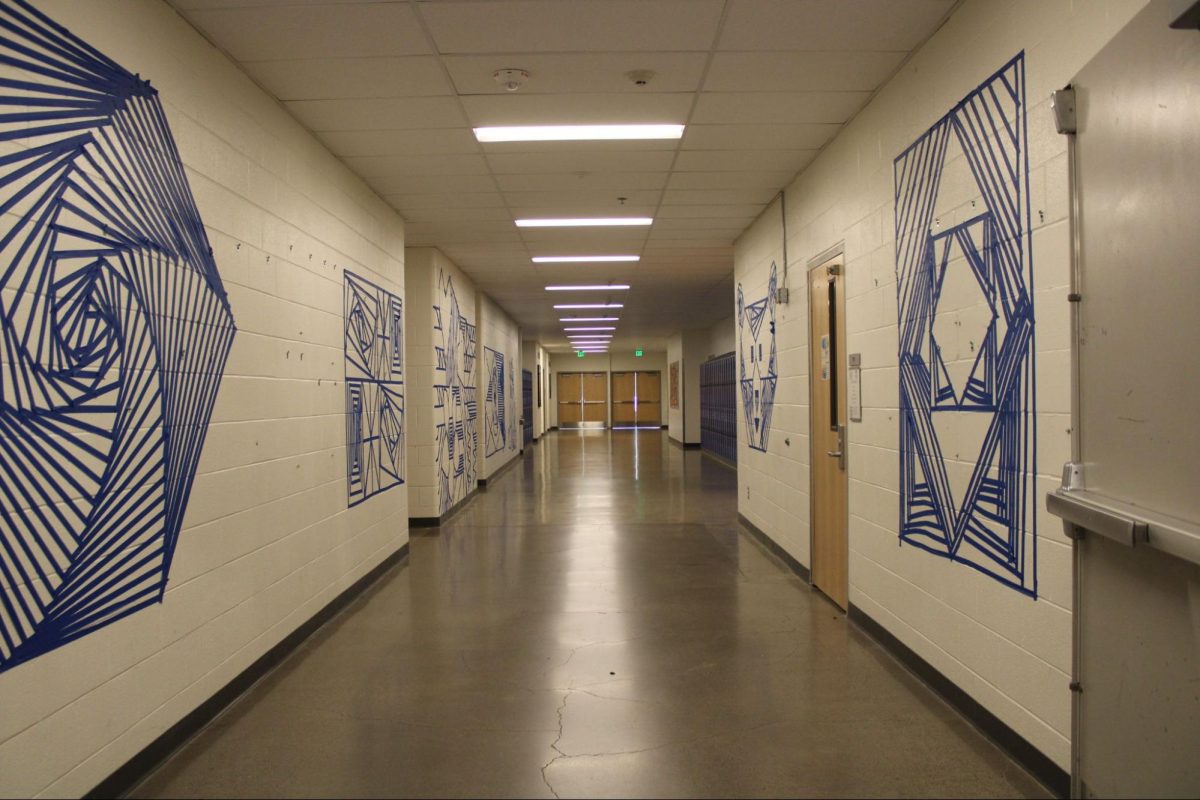Launch Aborted!
NASA’s Space Launch System (SLS) rocket with the Orion spacecraft aboard is seen atop the mobile launcher as it is rolled up the ramp at Launch Pad 39B, Wednesday, Aug. 17, 2022, at NASA’s Kennedy Space Center in Florida. NASA’s Artemis I mission is the first integrated test of the agency’s deep space exploration systems: the Orion spacecraft, SLS rocket, and supporting ground systems. Launch of the uncrewed flight test is targeted for no earlier than Aug. 29. Photo Credit: (NASA/Joel Kowsky)
October 7, 2022
Recently, NASA attempted to launch Artemis I from the Kennedy Space Center in Florida; however, due to the impending threat of Hurricane Ian, the launch has been postponed. This launch will mark the first step in the agency’s ambitious plan to put humans back on the moon by 2025. The mission is meant as a test for NASA’s latest space exploration technology, namely the SLS (Space Launch System), which is the most powerful rocket ever built, as well as the Orion Spacecraft, a state-of-the-art crew module designed to carry humans into deep space.
Because Artemis I is just a test, it won’t be carrying any humans, but it will be carrying more than 59,000 pounds of scientific equipment meant to pave the way for future manned missions to the moon. Over the course of about 3 weeks, Artemis ! will leave the earth and arrive at the moon, where it will complete one full rotation before beginning the journey home. Artemis I is only the first of three missions in the Artemis program. Artemis II, launching next year, will complete the same journey as Artemis I, except this time, it will be carrying a human crew. Finally, Artemis III is currently slated for launch no later than 2025, and will land the first humans on the moon in over 50 years, including the first woman and person of color.
However, unlike previous missions, Artemis III’s job won’t be over when it leaves the moon, because it’s leaving behind two things: A small base camp on the surface of the moon, and most importantly, a permanent space station in orbit around the moon called The Gateway. The Gateway will be an international effort, with support already received from Canada, Japan, and Europe, as well as domestic partners like Elon Musk’s SpaceX. Gateway will be an essential part of NASA’s plans to send humans to the moon and beyond to the farthest reaches of our solar system.
Artemis isn’t NASA’s only project; you might have heard recently that NASA launched the James Webb Space telescope. This powerful telescope was placed in orbit around Earth at a distance of nearly a million miles! Webb uses the most advanced technology available to peer farther into space than ever before. Webb features powerful infrared cameras which will allow it to see stars and galaxies that were completely unknown to us before.
NASA hopes that Webb will be used by scientists for decades to come in a similar manner to its predecessor, the Hubble Space Telescope. Of course, Webb doesn’t just supply scientists with useful data, it also takes incredible pictures of the most beautiful and mysterious parts of space. NASA has already released the first dazzling images from Webb, with more sure to follow.
Between Artemis returning us to the moon, and Webb pulling back the curtain on the oldest mysteries of the universe, the future of space exploration is looking bright.






